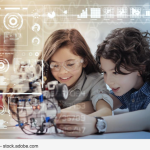Media REMIX: Digital Projects for Students – Edited By Michael Dezuanni and Anita Jetnikoff
Media Remix presents 24 projects for years 5-9 students. Each project focuses on a different aspect of media study and collectively they provide a comprehensive view of media production as well as many media studies issues.
There are many ingenious strategies at work in Media Remix. One is its way of teaching media literacy through production. Another is its intentionally ambiguous meaning of ‘remix.’ Yet another is the online support that adds to its interactivity and scope.
Some of Media Remix’s Media Studies Issues?
Fandom, Celebrity, Audience and Representation issues that are key to any media studies curriculum. But they are not addressed through reception (readings or videos); they are addressed through student production, in units that involve planning, production, post-production and reflection. Students personalize each project, working in trios, pairs or solo. The projects are invitational and authentic, and because they involve student’s personal lives and interests, plagiarism is unlikely, if not impossible.
Media Remix provides scaffolding in many forms. The processes students will use are broken down into their logical stages. Forms and graphic organizers are provided to support the processes. Production tips are given that help students deal with equipment issues as well as respecting copyright and privacy.
The book presumes students will have ready access to video and digital cameras, sound recorders and networked computers. Its projects include image, video and audio recording and editing, internet searches, downloads, uploads and multimedia presentations. The infrastructure needed to support these activities is available, or becoming available, in most schools. Teachers who might be concerned about the knowledge they and students need to execute the projects need not fear: they will find ready support either among their own students or from online tutorials.
The skills that students develop as they work through Media Remix’s projects are not just skills needed by those wishing to enter media industries, but rather are skills needed by ALL students. It is hard to imagine a 21st century job that does not involve significant media savvy and some form of media production. It is also hard to imagine civic involvement that does not address the same skills.
Putting production first has some real benefits. Because students must have significant content knowledge before they can create significant media texts, Media Remix’s projects force them to learn and assimilate both content and production knowledge. Remixing Celebrity, for example, asks students to imagine and represent themselves as celebrities. In order to do that, however, students must examine the celebrity phenomenon to understand its codes and conventions. They must also learn the codes and conventions of photography and green screen digital effects. Remixing Celebrity, therefore, involves students in understanding celebrity, photography and digital effects, all while producing a text that teachers can use for assessment and evaluation.
“Remix” in Media Remix has several meanings: sometimes makeover, sometimes experiment, sometimes re-organize and sometimes make-your-own. Each of these fosters powerful learning, because as students manipulate ideas and textual elements, they are learning and remembering them for future reference and use. Brain theory tells us that manipulating ideas through active learning achieves much greater retention. Learning theory tells us that producing texts can be an excellent way for students to consolidate their knowledge. Whichever remixing students do, these learning goals are accomplished.
Some projects are more practically-driven than others. Remixing with Composition provides a short project within which students learn the elements of visual composition. Shot names and definitions are provided. This is the kind of lesson that many teachers might execute using a short commercial video to illustrate, but by having students learn and then use the visual language, students learn the language through their own practice.
Media Remix is accompanied by eBookplus, which provides a wide range of supports on the Jacaranda website. Each book comes with a unique registration number. Each registration number is a key to a store of online forms, graphic organizers and videos that support and extend the learning experience. You can even download a pdf of the entire student book. The supports are referenced on the relevant pages throughout the book.
The projects become increasingly sophisticated and complex as they proceed, with the last few projects having sufficient ambition that they could become culminating tasks for evaluation.
Media Remix meets the challenge of engaging and informing 21st century students about the languages and expressiveness of media. What it does not engage are issues of ownership and control, or the shift from mass media to multi-media (consumer to prosumer) that are occurring daily. But these are issues that teachers can easily explore in other ways or implicate as extensions of some of the Media Remix projects.
With 24 projects to choose from, Media Remix has something for everyone, novice and expert alike. In fact, I don’t see why some of the projects could not be executed by students younger than year 5; and I don’t see why many of the projects wouldn’t be sufficiently compelling and challenging for students older than year 9.
Media REMIX: Digital Projects for Students
Edited By Mchael Dezuanni and Anita Jetnikoff
[John Wiley & Sones, Australia, 2008]




